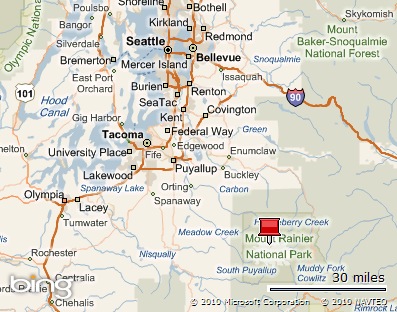May 29, 1982
At 14,411 feet (~4,392 m), Mount Rainier (or Mount Tahoma, as the mountain is traditionally known), is the highest mountain in not only Washington, but in the Cascade Range as well. An active volcano, Rainier’s last recorded eruption was between 1820 and 1854.
Often blanketed with 25 feet (~7.5 m) of snow in the winter, the sub-Alpine meadows are supposed to be aglow with wildflowers in spring and summer. Perhaps that’s true, but on this end-of-May day trip, we found snow instead of flowers.
Mt Rainier makes a majestic backdrop.
Along the Kautz River.
Mt Rainier National Park Longmire Visitor Center
The photo on the right shows a tree ring from a 670-year old (1293-1963)
Douglas fir that grew in Snoqualmie national forest.
Longmire Springs
The spring water has a metallic taste … or so they say.
Left: Christine Falls; Right: Narada Falls
No wildflowers for us; we get plenty of snow instead.
Nisqually River Valley
The gateway to the “Mountain that was god.”
Mt Rainier from Ricksecker Point.
The Henry M Jackson Visitor Center is in the popular Paradise area of the park.
Enjoying Paradise!
After we came down the mountain, we swung over to Elbe and took a ride on the Mt Rainier Scenic Railroad, the longest continuously operating steam train railroad in the Pacific Northwest.
Left: All Aboard!
Right: Do you have a request?

Should I sit inside or …
It was a great day of exploration, with the mountain behaving itself and not blowing its top!Left: Topside seating provides great viewing opportunities.
Right: At the turnaround point we get to stretch our legs.





















No comments:
Post a Comment